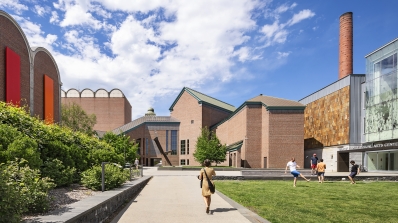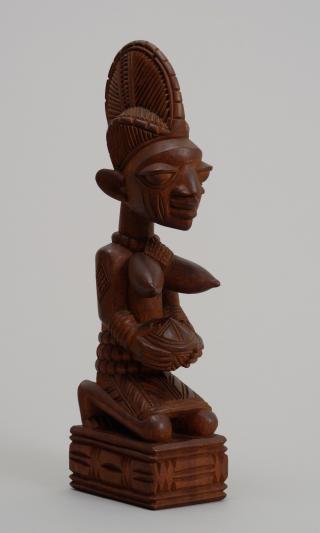Exhibitions Archive
The Craft of Art
Eric van HoveLocation: Jaffe-Friede Gallery, Hopkins Center, Open Tues.-Sat., 12:30-10:00 PM, Sun. 12:30-5:30 PM
In collaboration with the Studio Art Department and Dartmouth’s Artist-in-Residence Program, the Hood Museum of Art presents recent works by visiting Belgian artist Eric van Hove. Born in Guelma, Algeria, van Hove was raised in Yaoundé, Cameroon. In 2011, he moved to Marrakesh, Morocco, where he created his breakout V12 Laraki, an exact replica of the Mercedes-Benz engine of the same name, recently acquired by the museum. Produced in collaboration with about fifty-five local craftsmen, the sculpture showcases van Hove’s ingenuity and the brilliance of Maghreb craftsmanship. In addition to the majestic V12 Laraki, the exhibition includes an exploded V12 engine gearbox, and five smaller parts, all meticulously handcrafted using different techniques and with materials sourced from around Morocco.
Selections from the African Collection
The Art of WeaponsWorks by Victor Ekpuk
Auto-GraphicsUkara cloth symbolizes the power, wealth, and prestige of the Ekpe secret society, an interethnic all-male association, and the sacrality of Ekpe meeting lodges. Although commissioned and used by the Ekpe, located in the Cross River region at the border of southeastern Nigeria and western Cameroon, ukara is designed, sewn, and dyed by the Ezillo people in present-day Ebonyi State. The process of creating ukara cloths is laborious and involves many hands, but ultimately each cloth is highly individualized, clearly produced to be worn by a specific Ekpe person or to mark a particular Ekpe lodge. Nsibidi symbols, an ideographic and gestural system of communication, are dyed onto the cloth. The symbols’ meanings are largely guarded by Ekpe members, with more established members becoming deeply knowledgeable about the poly-semantic signs.
Constructing Black Identities across the African Diaspora
Made in the MiddleCultural anthropology began as the study of people—primarily in Africa—whom Europeans had defined as exotic, primitive, and uncivilized, but many later ethnographic studies debunked this colonial mindset. Today’s anthropologists aim to reveal the social, historical, and political construction of racial identities. The works of art in this small exhibition further this effort. They represent a host of colonial binaries—culture and civilization, traditional and modern, savage and civilized, rest and west, black and white—that often serve to perpetuate systems of inequality rather than understanding of our shared humanity. Taken together, the artists here reveal the difficult positions in which people of color find themselves when trying to simultaneously conform to standards upheld by white western society and recuperate a relationship to Africa or blackness. Yet the images expose not only the potential hurt but also the excitement of crafting hybrid identities from various cultures.
Chelsey Kivland, Robert A. and Catherine L. McKennan Postdoctoral Fellow of Anthropology, and Amelia Kahl, Hood Museum of Art Coordinator of Academic Programming, selected these works for Professor Kivland’s Introduction to Cultural Anthropology class. Students in the class wrote descriptive labels for these works and used them for a visual anthropology assignment.


